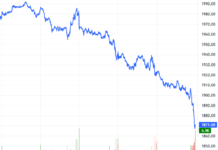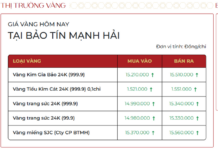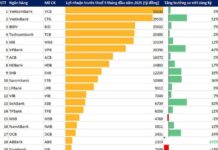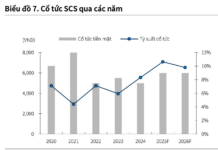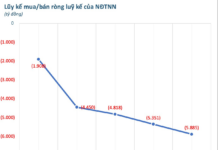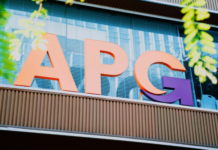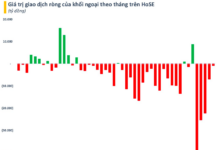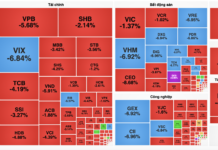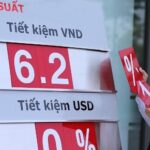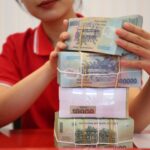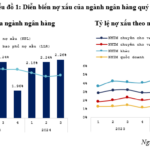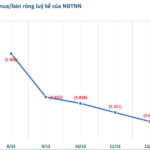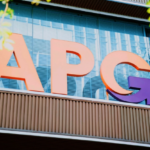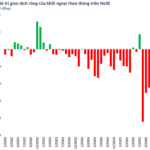“Boosting” Year-End Credit Growth
Mr. Nguyen Khac Duy, Deputy Director of Chon Chinh Company, a rice exporter, shared that their export orders have increased by 200% this year due to market expansion. This surge in orders has subsequently increased the company’s capital needs. Fortunately, the two banks with which the company has credit relationships are reducing lending rates from 7% to 5-5.5% per annum. The company plans to borrow more capital to invest in machinery and expand its production scale.
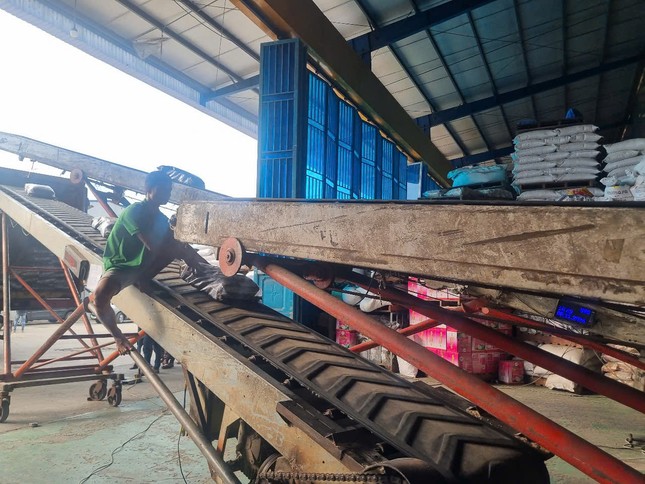
A rice export enterprise in need of borrowing hundreds of billions of dong at the end of the year to expand its scale (Photo: Ngoc Mai)
According to the State Bank of Vietnam’s report, the lending rate has decreased by approximately 2.5% per year in 2023. In the first ten months of this year, the average lending rate further decreased by 0.76% compared to the end of 2023. Currently, banks are offering promotional credit packages with low-interest rates to boost year-end credit growth, with short-term lending rates ranging from 4.5-6.5% per annum and medium to long-term rates below 9% per annum.
To enhance capital access for enterprises and promote credit growth, banks are implementing large-scale promotional credit packages to serve the year-end business season. These packages offer short-term lending rates ranging from 4.5-6.5% per annum and medium to long-term rates below 9% per annum.
Specifically, Sacombank offers a short-term credit package of VND 15,000 billion with interest rates as low as 4.5% per annum for corporate clients and 5.5% per annum for individual clients engaged in production and trading activities.
ACB has allocated approximately VND 5,000 billion to finance small and medium-sized enterprises, catering to their production, business, import, and export needs.
Agribank has launched a VND 20,000 billion credit package for enterprises in the agricultural, aquatic, and import sectors, offering interest rates as low as 2.6% per annum for terms of less than three months…
Ms. Phung Thi Binh, Deputy General Director of Agribank, stated that since the end of the second quarter and the beginning of the third quarter, credit conditions have improved. Agribank’s credit growth in the first six months of the year has been significantly higher, indicating a more positive capital demand from enterprises. The bank aims to meet the minimum target set by the State Bank.
Credit Growth Will Drive GDP Growth
According to experts from VPBanks, the State Bank of Vietnam has relaxed credit limits for banks that have achieved at least 80% of their assigned targets, based on ranking scores. This policy will encourage competition among banks for credit room and market share, leading to more favorable interest rates for borrowers.
Regarding credit supply, the State Bank has been directing efforts to facilitate credit institutions in providing credit. The regulator has implemented numerous solutions and instructed credit institutions to review lending procedures to shorten processing times and better support borrowers. Additionally, the State Bank has made proposals to relevant ministries and sectors to improve credit conditions, especially for small and medium-sized enterprises.
With the banking sector’s 15% credit growth target for the year, the system will need to inject over VND 2 million billion into the economy.
As per the State Bank’s report, credit growth had reached approximately 10.08% by the end of October, higher than the 7.4% increase in the same period last year. This means that nearly VND 670,000 billion will be injected into the economy in the last two months of this year.
PGS.TS Nguyen Huu Huan, a senior lecturer at the University of Economics in Ho Chi Minh City, emphasized that promoting credit growth to support economic growth should be reasonable and not pursued at all costs, especially with regard to inflation control. He added that if the VND 670,000 billion were to flow into production, business, and consumer spending, it could potentially drive GDP growth beyond 6%.
The Race to Raise Deposit Rates: Why Banks Are Competing to Offer Higher Returns
As we approach the year-end, there has been a significant surge in demand for capital, especially medium and long-term funds. In response, banks have engaged in a fierce competition to raise deposit interest rates, with the highest rate reaching an impressive 6.4% per annum for terms of 18 months and beyond.
The Trillion-Dollar Bank: BIDV’s Monthly Loan Disbursements Surpass the Combined Total of 15 Other Banks
With a staggering monthly increase of VND 19.5 trillion in outstanding loans, this bank is on track to hit the VND 2 quadrillion mark by the end of the year. This unprecedented scale of lending portfolio solidifies its position as the leading lender in Vietnam, a remarkable feat that underscores its financial prowess and dominance in the industry.
What the Bad Debt Situation of Banks Reveals
Strong credit growth, largely driven by an increase in business lending, has kept non-performing loan ratios stable in Q3 compared to the previous quarter. However, a closer look at individual bank groups reveals a different story, with underlying risks still prevalent. In particular, there are notable concerns within the smaller commercial banking groups that warrant attention.

